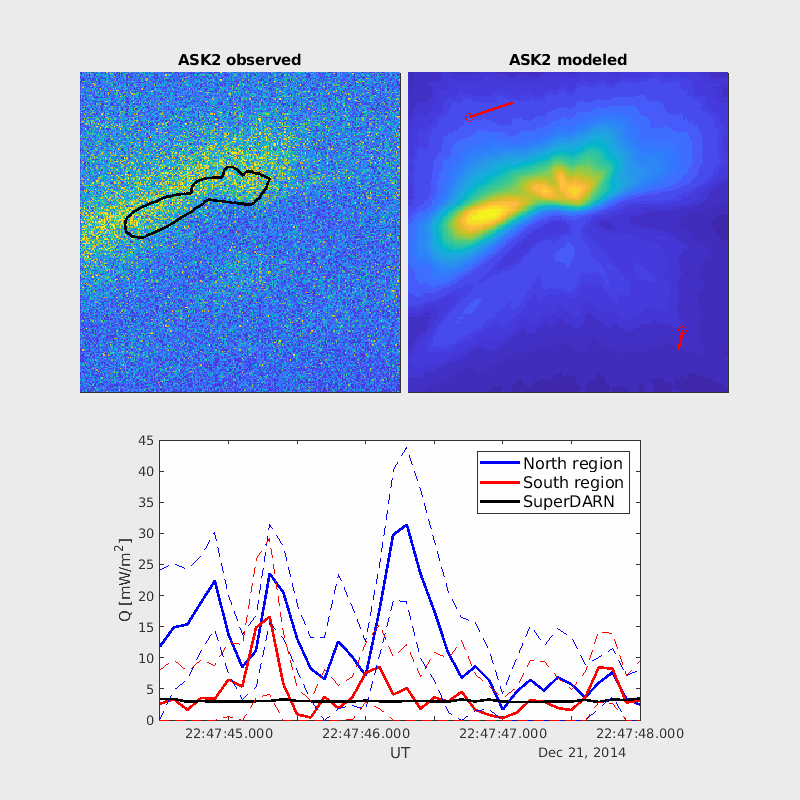MIST
Magnetosphere, Ionosphere and Solar-Terrestrial
Fine‐Scale Electric Fields and Joule Heating From Observations of the Aurora
By Patrik Krcelic (University of Southampton)
Optical measurements from three selected wavelengths have been combined with modelling of emissions from an auroral arc to estimate the magnitude and direction of small-scale electric fields on either side of an auroral arc for an event at 22:47:45 UT on 21 December 2014. The temporal resolution of the estimates is 0.1 s, which is much higher resolution than measurements from Super Dual Auroral Radar Network (SuperDARN) in the same region, with which we compare our estimates. The obtained electric fields have peak value of 88 ± 16 mV/m on the northern side of the arc and peak value of 66 ± 21 mV/m on the southern side of the arc. Additionally, we have used the Scanning Doppler Imager instrument to measure the neutral wind during the event in order to calculate the height integrated Joule heating. Joule heating obtained from small scale electric fields gives much larger values than that obtained from SuperDARN data. Results are briefly shown in the movie below, where the top two panels depict an observed and modelled auroral arc analyzed in current syudy, and the bottom plot depicts the evolution of Joule heating in time on each side of the auroral arc compared with the SuperDARN estimate. Our optical method for estimating electric fields, and consequently the Joule heating using ASK, has proven to be very valuable in understanding the local heating effects in the vicinity of auroral activity. Such high spatial and temporal resolution electric fields may play an important role in the dynamics of the magnetosphere-ionosphere-thermosphere system.

Original article for further detail:
Krcelic, P., Fear, R. C., Whiter, D., Lanchester, B., Aruliah, A. L., Lester, M., & Paxton, L. (2023). Fine-scale electric fields and Joule heating from observations of the aurora. Journal of Geophysical Research: Space Physics, 128, e2022JA030628. https://doi.org/10.1029/2022JA030628